The grip plays a crucial role in shaping the position of your wrists during the golf swing. It significantly influences how your wrists will appear and function throughout the swing.
How you grip the golf club serves as the foundation, setting you up for a successful swing. In this article, we will explore the different types of grips and discuss the various issues that can arise with each of them. By understanding the options and potential challenges, you can improve your grip and set yourself on the path to a better swing.
Grip Strength Explained
The way you position your hands on the club (rotationally) can determine whether your grip is neutral, weak, or strong, it has nothing to do with grip pressure. A simple way to visualize this is by gripping the club and observing your hand placement while looking down.
- A neutral grip – if you see two knuckles, like Adam Scott or Jason Day do, you have a neutral left-hand grip.
- On the other hand, a strong grip twists the entire hand position to the right (from your perspective while looking down at the club). Three knuckles or more means a strong left hand golf grip, like Zach Johnson.
- Conversely, a weak grip rotates your entire hand position to the left. If you don’t see any knuckles, your lead-hand grip is very weak. Jordan Spieth grips it like this (so did Johnny Miller
Understanding these different grip types can help you optimize your hand placement for a more effective and comfortable swing.
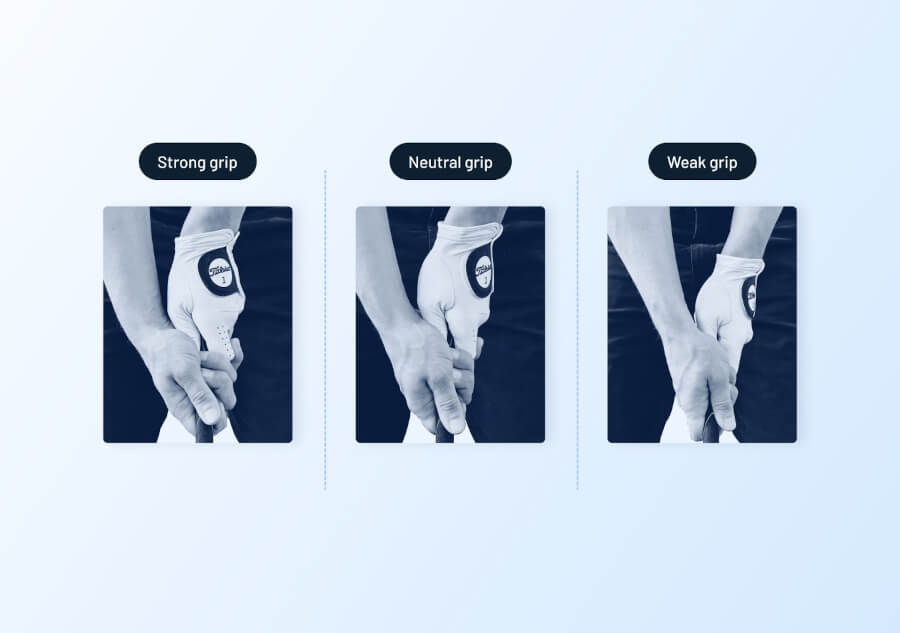
Weak Grip
A weak grip will have the right hand in a weaker position throughout the swing. The weak grip has nothing to do with grip pressure; it’s more about the position of the hands and their ability to work in your golf swing.
The weak grip is great for golfers that hook the ball. Sometimes a hook is caused by that overactive right hand shutting the clubface through impact. If you can get the hands into a weaker position, it could square up the clubface.
Players who have a weak grip at address tend to have more flexion in their wrists at the top. This flexion is a great thing to have at impact if a player can return the weak grip back in a flexed position.
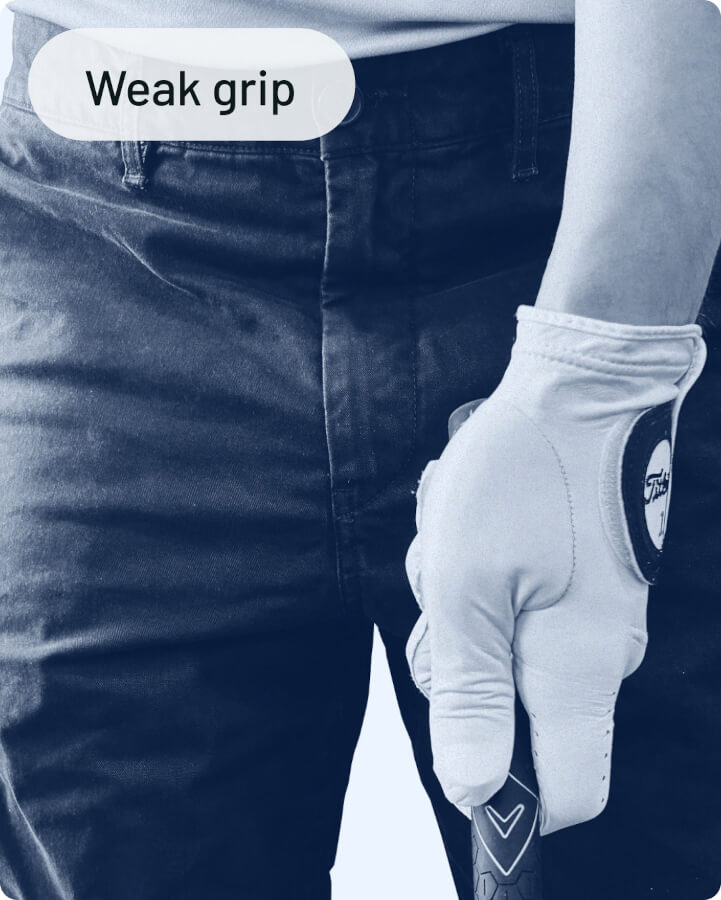
Pros
- It can help to control a hook.
- Make the left hand the lead in the swing.
Cons
- Some golfers will find that they can’t square the clubface at impact with a weak grip.
- The right arm can come too far over the top of the club and make it difficult to get the swing on the plane.
A weak lead hand is a suitable option for some players as it facilitates wrist flexion, shifting the club’s center of mass behind the hands.
Neutral Grip
The neutral grip works best for golfers who have all other aspects of their swing in order. The majority of players on the PGA Tour use a neutral grip because it allows for them to hit a wider variety of shots like cuts and draws.
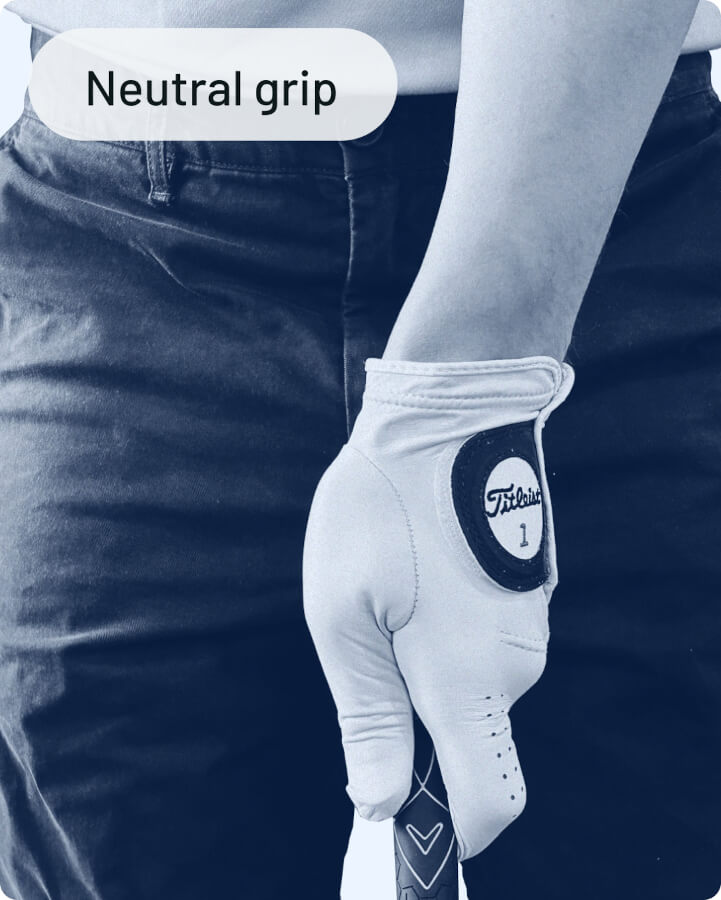
Pros
- The neutral grip feels natural to most golfers so that is a definite benefit.
- Most players feel that the neutral grip helps them easily control the clubface. More clubface control leads to more accurate shots.
- The neutral grip makes it much easier to hit shaped shots.
Cons
- Can lead to slicing in some golfers if the clubface stays open.
- Too much wrist freedom which can lead to inaccurate shots.
A neutral lead hand combined with a flat wrist at the top of the backswing is the popular choice among top players. It allows for better control of the clubface and dynamic loft, enabling versatility in ball trajectory.
Strong Grip
A strong grip has the right hand in a more powerful position that can help golfers square the clubface at impact. If you are a golfer that slices the ball, this is a grip to consider using as the clubface stays more closed.
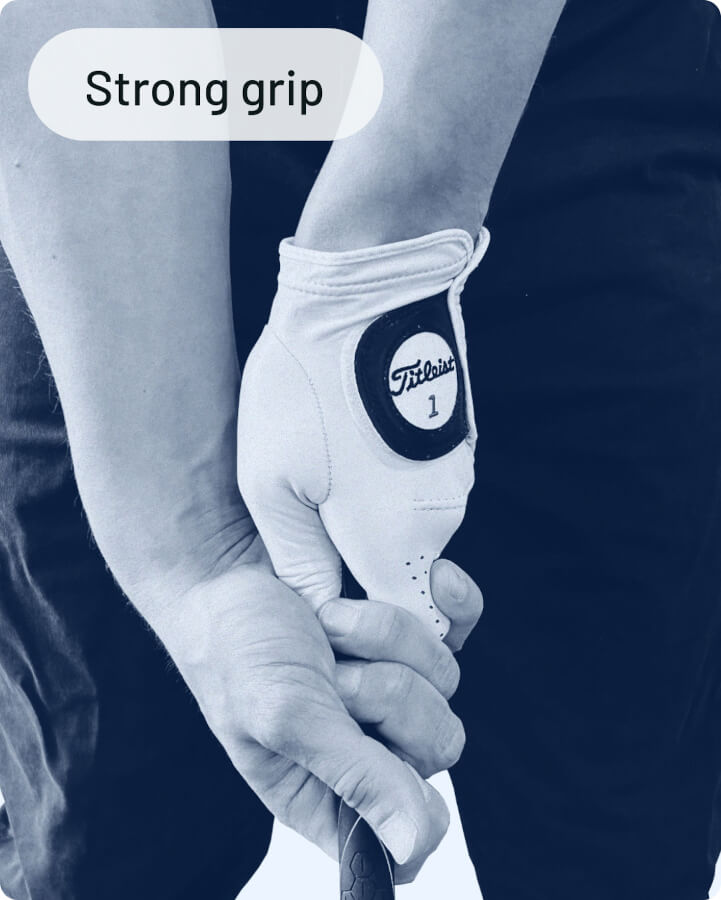
Pros
- Strong grips can help to eliminate a slice.
- Players with a weaker left hand can feel like it’s easier to close the clubface at impact.
- Makes it easier for players to understand how to release a golf club.
Cons
- It can get too strong and cause a hook if the face is too closed.
- Often makes the right hand get too active in the swing.
- Takes away the ability to shape shots with ease.
A strong lead hand can be effective for those seeking straight shots or gentle fades, as it helps prevent the clubface from staying too open at impact. However, top players generally prefer a more versatile grip to accommodate a wide range of ball trajectories.
Proper Golf Grip: How Grip Affects My Shots?
Your hands connect with the golf club and set the foundation for the rest of your swing. The grip is incredibly important as it has a large impact on the clubface angle. With the new ball flight laws in golf, we know that the clubface angle at impact is what determines the direction of the ball.
The grip also significantly influences your wrist angle positions from Address to Top and all the way to Impact. To comprehend the lead wrist target ranges at each of the positions for Pattern A players, please refer to the table provided below.
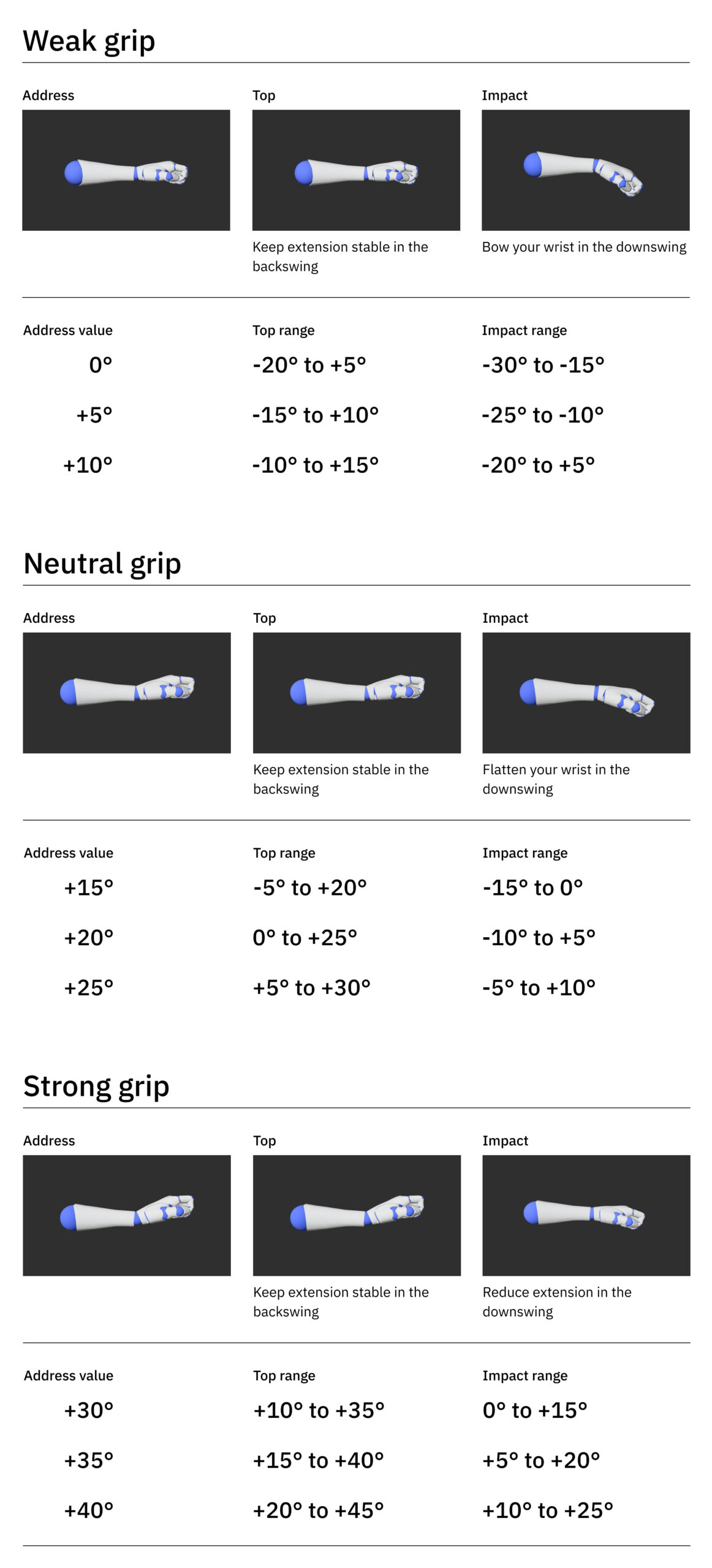
How to Know Which One is for Me?
The best way to know how to hold a golf club is to experiment with the different types and see where you have the most success.
Which Grip is Better?
There is no perfect golf grip; the best grip is the one that works for your game. Looking at the grips of professional golfers can teach us a lot about what works, what doesn’t, and how you have to match the grip style you choose to your hand size and natural talents.
How Tour Players Grip
Lead Hand at Address
If we look at the Pro players, we will see that the neutral grip is the goal for most players.
This information was confirmed when looking at tour player data.
- 57% of players have a neutral 2-knuckles position.
- 31% of players have a weak 1-knuckle position.
- 2% of players have a strong 3-knuckles or more position
Lead Hand at Impact
Although address and the top of the swing are incredibly important to learn about, the lead hand at impact is what matters the most.
- The general tendency of players with a weak grip is to present a flexed wrist and greater supination of the forearm at impact.
- The general tendency for players with a neutral grip is to have a flat wrist at impact.
- The general tendency of players with a strong grip is to have a flat or slightly extended wrist at impact and a “locked” position in pronation of the forearm.
Conclusion
While high-level golf can be played with various lead hand positions (weak, neutral and strong), the trail hand position is less variable. Optimal control of the clubface is achieved with a neutral trail hand position, where the palm is parallel to the clubface.
From a biomechanical perspective, a strong trail hand facing upward can be workable, but achieving good impacts with a particularly weak trail hand and a palm facing downward is challenging.
While the majority of players follow general trends, it’s worth noting that a minority of top players exhibit unique combinations such as a strong grip with a flexed lead wrist at the top or a weak grip with an extended lead wrist. These individual choices emphasize the personal nature of a good swing dynamics.